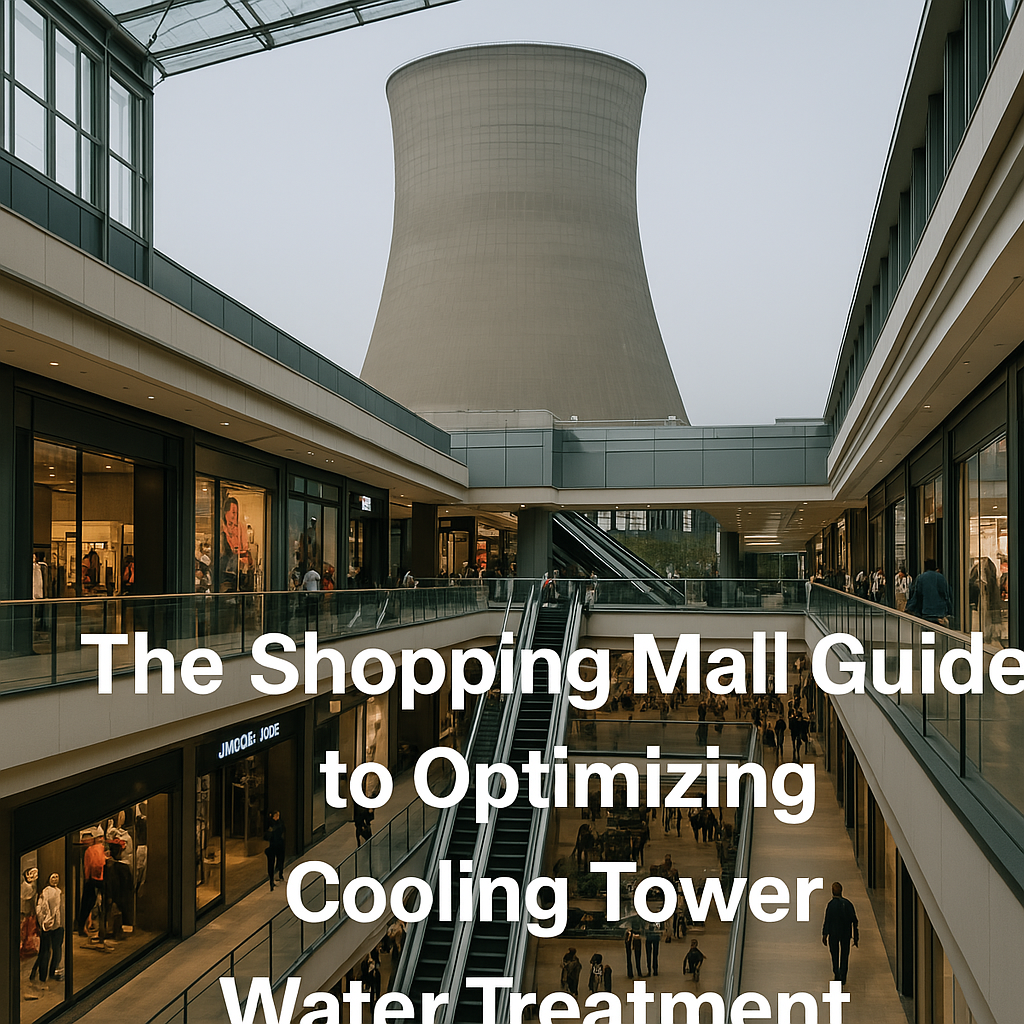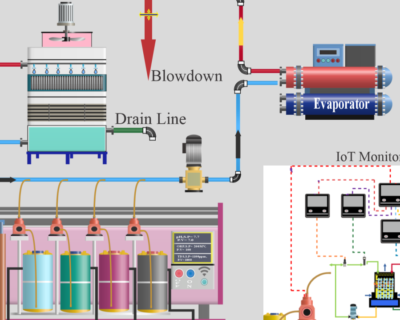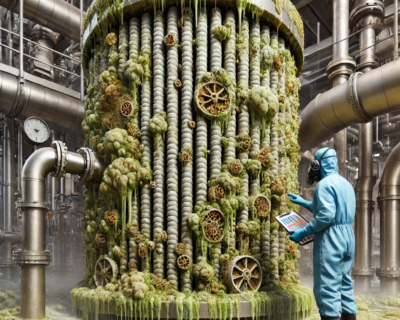Blog
The Ultimate Guide to Cooling Tower Water Treatment for Shopping Malls
Introduction
Shopping malls rely on HVAC systems and cooling towers to maintain a comfortable indoor environment for thousands of visitors daily. However, poor water treatment can lead to high operational costs, Legionella risks, and inefficient cooling performance. With rising electricity and water costs, shopping malls must optimize their cooling tower water treatment to enhance efficiency, safety, and cost savings.
This guide explores cost-saving strategies, Legionella prevention, and IoT-based smart solutions to help malls achieve sustainable and efficient HVAC operations.
- Reducing Cooling Tower Water Treatment Costs by 30%
Common Cooling Tower Challenges in Shopping Malls
- High Water Wastage – Excessive blowdown increases water bills.
- Scaling & Corrosion – Leads to inefficiencies and higher maintenance costs.
- Microbial Growth – Biofilm formation impacts heat exchange efficiency.
- Overuse of Chemicals – Poorly optimized treatment increases chemical expenses.
Cost-Saving Solutions for Malls
- Advanced Antiscalants & Corrosion Inhibitors – Reduces scale buildup and extends equipment life.
- Automated Chemical Dosing – Optimizes chemical usage, preventing over/under-dosing.
- Use of Recycled Water – Treated STP water can reduce reliance on freshwater.
- IoT-Based Water Treatment – Enables real-time monitoring and predictive maintenance.
Legionella Risk in Cooling Towers: How Safe is Your Mall’s HVAC System?
- Why Shopping Malls Must Worry About Legionella
- Public Health Concern – Cooling towers can spread Legionella bacteria through aerosols.
- Legal Compliance – Authorities worldwide enforce Legionella prevention measures.
- Reputation Risk – An outbreak can damage brand trust and mall footfall.
- How to Prevent Legionella in Shopping Mall Cooling Towers
- Routine Water Testing – Monthly microbial analysis for Legionella.
- Biocide Treatment Program – Use a combination of non-oxidizing biocides & biodispersants.
- Optimized Water Flow – Eliminate stagnant water zones in cooling towers.
- Periodic Deep Cleaning – Descaling and disinfection every 6 months.
- Smart Monitoring Systems – IoT sensors detect bacterial growth in real-time.
Real-World Example: Shopping Mall’s Legionella Prevention Plan
- Problem: A large mall in Jayanagar detected Legionella bacteria in its cooling system.
- Solution: Adopted a biocide treatment plan with automated monitoring.
- Outcome: Eradicated Legionella risks and ensured compliance with safety standards.
Smart Water Treatment: The Future of Cooling Towers in Shopping Malls
- Challenges in Traditional Cooling Tower Management
- Manual Water Testing & Dosing – Leads to errors and inefficiencies.
- Uncontrolled Chemical Consumption – Wastes money and resources.
- Delayed Detection of Issues – Causes scaling, biofilm growth, and inefficiency.
How IoT-Based Water Treatment Works
- Real-Time Monitoring – Sensors track pH, TDS, conductivity, and microbial levels.
- Automated Dosing System – Adjusts chemical dosing based on real-time data.
- Predictive Maintenance Alerts – AI-driven insights detect early warning signs.
- Remote System Control – Facility managers can monitor treatment via a mobile app.
Final Takeaway: The Future of Cooling Tower Water Treatment in Shopping Malls
With the right water treatment strategies, shopping malls can cut costs, improve efficiency, and enhance public safety. Implementing advanced chemical solutions, Legionella prevention measures, and IoT-driven water management will ensure a sustainable and profitable HVAC system.
Ready to Upgrade Your Cooling Tower Water Treatment?
Let’s discuss customized solutions to help your mall reduce costs, prevent Legionella, and adopt smart water treatment technology! Contact us today.




